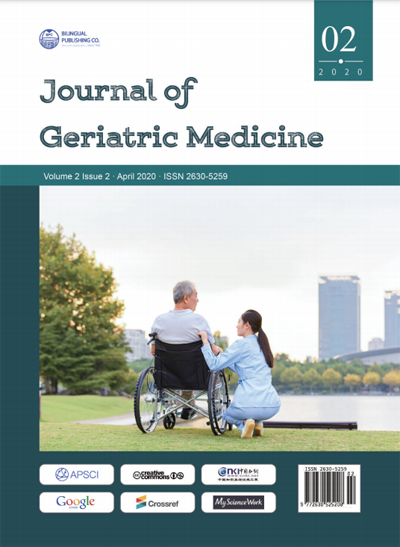 Correction & Withdrawal Policies
Correction & Withdrawal Policies
Aging Experience and the Results of the West for Asia-A Sociological Perspective
DOI:
https://doi.org/10.30564/jgm.v2i2.2309Abstract
The present paper analyzes different demographic variables to reach the result of how population become aged in different parts of Asia. Policies and planning of population during the past decades have contributed to more life expectancy, leading to the aging of population in countries like Japan, China, South Korea, Singapore, Taiwan and to some extent Iran. Population in some countries aging without needs gradually emerging, being met. People usually at the age of seventy and over lose their normal strengths and potentialities. Many of their capabilities are lost. They gradually become dependent on other younger age groups. Western countries usually have made better policies and plans earlier, and because of that, their aging people have better immunity as far as their health, social and economic conditions are concerned. Many aging people in Asian countries are concerned about their needs during the age of 70 and over. Decline in birth rate is the most important factor positively affecting the aging of population after a few decades has passed. The same happened to Japan, China, South Korea etc. Many Western countries started narrowing their birth rates in the nineteenth century, whereas Asian countries started that since around 1950. Earlier, women used to give birth to 7-8 children, in which half or more of them died in infancy, and the rest who survived, had to face malnutrition, shortage of education, child-labor from the age of 7-8, maternal fatality of mothers and many more unfavorable conditions that affected their lives. While the average age of marriage is between 26-29 in the West, it is usually the age of 20 or below within many developing countries.
Keywords:
Demographic variables;Population policies;Aging;Aging needs;Birth rateReferences
[1] Ajzen, I. et al. Fertility Intentions: An Approach Based on the Theory of Planned Behavior, 2013, 29: 203.
[2] Arpino, B. et al. How Do Changes in Gender Role Attitudes Towards Female Employment Influence Fertility? A Macro-Level Analysis, 2015, 31(3): 370- 382.
[3] Berman, P., Rose, L. The Role of Private Provider in Maternal and Child Health and Family Planning Services in Developing Countries, Health Policy and Planning,1996.
[4] East- West Center. Honolulu, Hawaii, 2010.
[5] Ferrinho, P. et al. Is there a case for Privatizing Reproduction Health? Patchy Evidence and much Wishful Thinking. Studies in Health Services Organization and Policy, Google Scholar, 2001.
[6] Ganching, T. et al. Pregnancy and Child Birth Outcomes among Adolescent Mothers, A World Health Organization Multicounty Study, 2014.
[7] Hanson, K., Berman, P. Private Health Care Provision in Developing Countries: A Preliminary of Levels and Composition, Health Policy and Planning,1998.
[8] Hashimoto, A., Ikels, C. Filial Piety in Changing Asian Societies, Handbook of Age and Aging, Cambridge: Cambridge University Press, 2005.
[9] Harper, S. Economic and Social Implications of Aging Societies, Science, 2014, 346(6209).
[10] Ibid: 38.
[11] Ibid:. 78.
[12] Lunenfeld, B. et al. The Clinical Consequences of an Aging World and Preventive Strategies, 2013,27 (5): 643-659.
[13] Repetto, R. Economic Equality and Fertility in Developing Countries, New York: RFF Press, 2013.
[14] Retrieved, 2020.
[15] Say, L. et al. Global Causes of Maternal Death: A WHO Systematic Analysis, 2014.
[16] Strategies towards Ending Preventable Maternal Mortality (EPMM). World Health Organization, 2015.
[17] Thompson, L. G. Chinese Religion: An Introduction, 4. Belmont, CA: Wadsworth, 1989.
[18] Thosto, A., Lin, H.S. Social Change and Family in Taiwan. Chicago: University of Chicago Press, 1994.
[19] Thind, A. et al. Where to Deliver? Analysis of Choice of Delivery Location from a National Survey in India, BMC Public Health, 2008.
[20] Trends in Maternal Mortality. 2000-2017: Estimated by WHO, UNICEF, UNFPA, World Bank and the United Nations Population Division, Geneva, 2019.
[21] United Nations. The Determinants and Consequences of Population Trends, Vol.1, Population Studies, 1973, 50.
[22] Xing, Y. Japanese Economy: Facing the Constraints of an Aging and Declining Population, East Asian Policy, 2016, 8(1): 79-94.
[23] Zwi, A.B. et al. Private Health Care in Developing Countries, British Medical Journal, 2001.




 Mohammad Taghi Sheykhi
Mohammad Taghi Sheykhi





